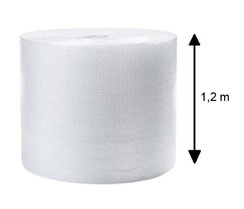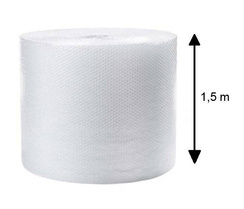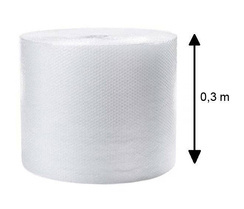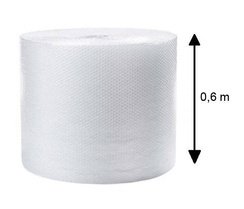Bubble Wrap: Applications and Benefits in Package Protection
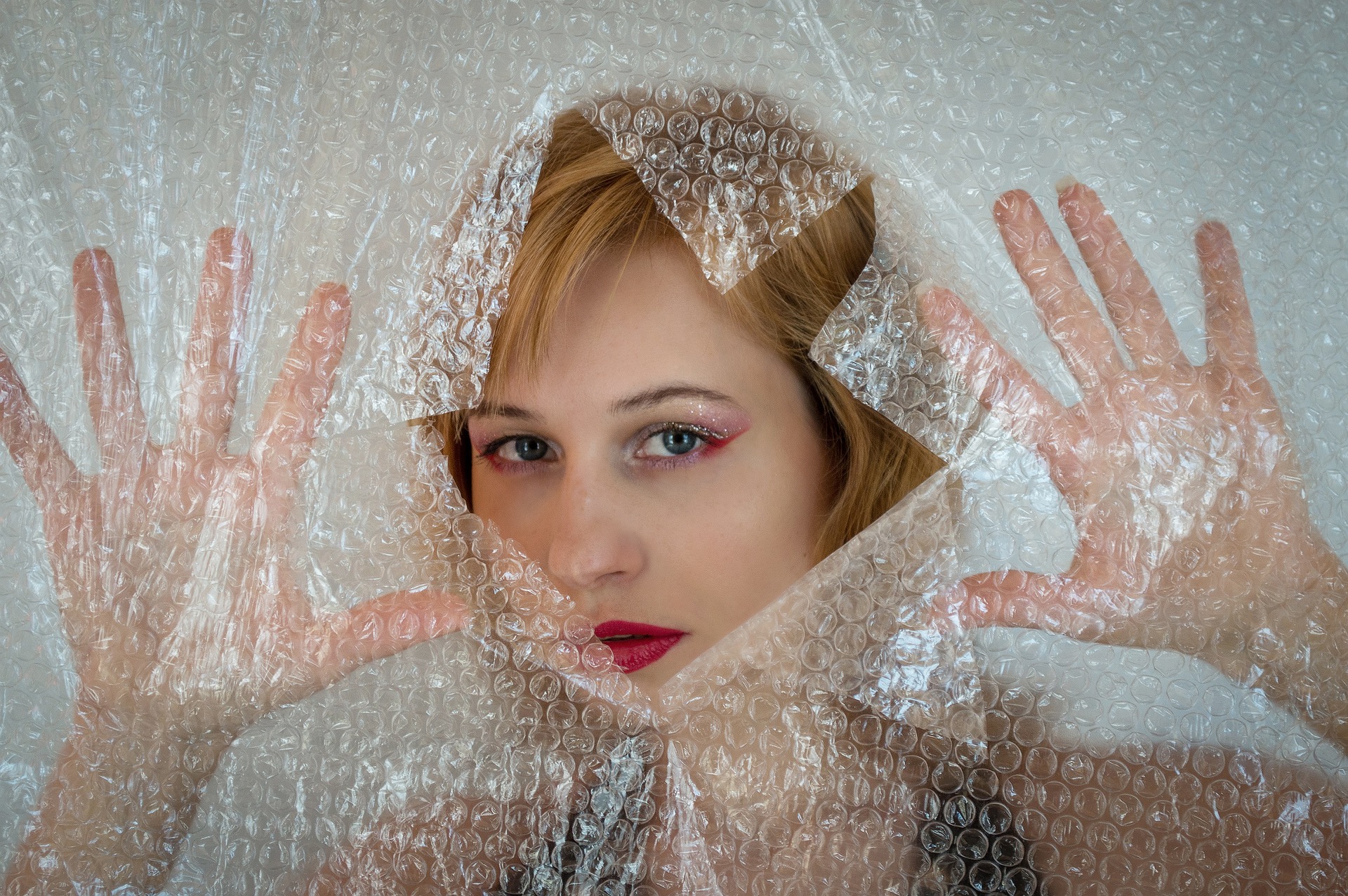
Bubble Wrap: An In-Depth Overview
Bubble wrap, also known as bubble film, is a versatile packaging material that provides unmatched protection for items during transport. Its unique construction, consisting of layers of plastic filled with air, makes it highly effective in cushioning shocks and preventing damage.
Origins of Bubble Wrap
Bubble wrap was invented in 1957 by Alfred Fielding and Marc Chavannes, two engineers who initially attempted to create a three-dimensional wallpaper. Imagine wallpaper with small bubbles that would give walls a unique texture and appearance. Although their initial idea did not succeed as wallpaper, they quickly realized the potential of their invention in the packaging industry.
Before bubble wrap became a commonly used packaging material, Fielding and Chavannes made several attempts to commercialize their product. Initially, the film was used as thermal insulation in greenhouse plant cultivation. It wasn't until the 1960s, when the company Sealed Air Corporation, founded by the inventors, began mass-producing bubble wrap, that its full potential was realized. The film quickly gained popularity in various industries, including transport and warehousing.
Material and Production Process
Bubble wrap is made from polyethylene (PE), a plastic with excellent chemical and physical properties. Polyethylene is valued for its strength, flexibility, and resistance to chemicals and moisture, making it an ideal material for protective films. The production process of bubble wrap is technologically advanced and consists of several key stages:
- Extrusion of Polyethylene: The process begins with the extrusion of polyethylene granules. The granules are heated in a special machine called an extruder until they reach a liquid state. The liquid polyethylene is then extruded through nozzles, creating a thin layer of film.
- Bubble Formation: The next step is forming air bubbles. This is done by applying a layer of liquid polyethylene to a special mold with bubble-shaped recesses. The mold is cooled, causing the polyethylene to solidify, forming air-filled bubbles.
- Lamination of Layers: Once the bubbles are formed, a second layer of polyethylene is applied on top. Both layers are then sealed together in a laminating process, creating a uniform, two-layer film with built-in air bubbles.
- Quality Control: After lamination, the bubble wrap undergoes a series of quality tests. Its thickness, tear strength, and bubble integrity are checked to ensure that the product meets specified standards.
- Cutting and Packaging: The final stage is cutting the film into appropriate lengths and widths according to customer requirements. The film is then rolled into rolls or cut into sheets, and subsequently packed and prepared for shipping.
Advantages of Bubble Wrap
- Shock and Pressure Absorption: Air bubbles act as shock absorbers, protecting items from external shocks and pressures. This is especially important when packing fragile items like glass or ceramics. This helps avoid damage during transport, which is crucial for maintaining the quality and value of products.
- Flexibility and Versatility: Bubble wrap is extremely flexible, allowing it to easily conform to items of various shapes and sizes. It can be used for both small, delicate items and large, heavy loads. Its versatility makes it an ideal solution for packing a wide range of products.
- Lightweight: Bubble wrap is very lightweight, which helps reduce shipping costs. The weight of the packaging material is significant, especially in bulk shipments, where every extra kilogram can increase transport costs. Bubble wrap allows for protecting shipments without significantly increasing their weight.
- Thermal Insulation: Bubble wrap also has insulating properties, meaning it can protect products from extreme temperatures. This is particularly important when shipping temperature-sensitive goods, such as electronics, cosmetics, or certain food products.
- Moisture and Dust Protection: Thanks to its structure, bubble wrap acts as a barrier against moisture and dust, providing additional protection for packed items. This is especially important for long-term storage or shipping products in various weather conditions.
- Ease of Use: Bubble wrap is easy to use – it can be quickly and efficiently wrapped around items and easily cut to the desired sizes. Its simple application makes packing less time-consuming, which is beneficial for both small businesses and large logistics companies.
- Recyclability: Polyethylene, from which bubble wrap is made, is fully recyclable. Many recycling companies collect and process used film, reducing the amount of waste going to landfills. Awareness of bubble wrap recycling options contributes to more sustainable waste management.
- Availability and Affordability: Bubble wrap is widely available and relatively inexpensive, making it a cost-effective solution for businesses of various sizes. Its wide availability in different formats (rolls, sheets, bubble envelopes) allows for adjusting purchases to individual packing needs.
Key Parameters
On the market, bubble wraps with bubbles of different diameters are available, typically 10 mm (small bubbles) and 30 mm (large bubbles). The choice of the right film depends on the type and weight of the item being packed and the specific protection and transport needs.
Bubble Diameter
- Small Bubbles (10 mm): Bubble wrap with small bubbles is ideal for packing smaller and lighter items. Small bubbles provide more contact points, effectively dispersing impact energy and protecting delicate items from damage. It is often used for packing electronics, glass, ceramics, and other fragile items.
- Large Bubbles (30 mm): Bubble wrap with large bubbles is more suitable for packing larger and heavier items. Large bubbles offer higher cushioning and better protection against strong shocks. It is ideal for securing furniture, household appliances, and other large and heavy items.
Film Weight
Bubble wrap comes in different weights, which affect its strength and resistance to abrasion and tears. Film weight defines its mass per unit area (usually expressed in grams per square meter, g/m²). The higher the weight, the more durable and strong the film is.
Low Weight: Low-weight films are lighter and more flexible, making it easier to form them around irregularly shaped items. They are suitable for packing lighter and less demanding items where exceptional tear resistance is not required.
High Weight: High-weight films are more durable and resistant to mechanical damage. They are ideal for packing heavier items that require additional protection against abrasion and tears during transport. High-weight films are often used in industrial applications.
Number of Layers
Bubble wrap can have different numbers of layers. More layers usually mean better protection but also more weight and volume of the material. Double-layer film is standard, but more advanced versions with more layers for additional protection are also available.
Perforation
Some bubble wraps are perforated at regular intervals, making it easier to tear them without the need for scissors or a knife. This can be especially useful in situations where time and packing convenience are crucial.
Applications of Bubble Wrap
Thanks to its exceptional protective properties, bubble wrap is widely used in various industries and situations. Here are the main areas of its application:
Packing Shipments
- Bubble wrap is indispensable in e-commerce, where it is necessary to safely pack a variety of products for shipping. It protects against mechanical damage and external factors such as moisture and dust. Online stores that ship products daily use bubble wrap to ensure that their customers' purchases arrive intact.
- Electronics: Delicate electronic components such as laptops, phones, and accessories require special protection. Bubble wrap cushions shocks and prevents damage during transport.
- Cosmetics: Cosmetic products, especially those in glass containers, are prone to breaking. Bubble wrap provides them with adequate protection.
- Toys and Gadgets: Items of irregular shapes and various materials can be safely packed thanks to the flexibility of bubble wrap.
Moving
During moves, bubble wrap ensures the safety of delicate items such as dishes, decorations, and electronic equipment. It reduces the risk of breaking and scratching, which is crucial when items are transported over long distances or stored for extended periods.
- Dishes and Glassware: Wrapping plates, glasses, and stemware in bubble wrap prevents them from breaking.
- Decorations and Ornaments: Delicate ornaments, often of irregular shapes, can be secured against damage.
- Electronic Equipment: Computers, televisions, and other electronic devices are protected against shocks and drops.
Industry and Warehousing
In industry, bubble wrap is used to secure goods in warehouses and during transport. It protects against mechanical damage and atmospheric factors such as moisture, dust, and extreme temperatures.
- Warehousing Goods: Products stored in warehouses are exposed to various dangers such as accidental impacts or temperature changes. Bubble wrap helps protect these products from damage.
- Internal Transport: During the internal movement of goods within a warehouse or production plant, bubble wrap secures them against mechanical damage.
- Automotive Industry: In this industry, bubble wrap is often used to protect car parts during transport and storage. It prevents scratches, dents, and other damage.
Art and Antiques
Bubble wrap is also used to secure artworks and antiques. These valuable items require special care during transport and storage. Bubble wrap provides them with necessary protection against mechanical damage and external factors.
- Paintings and Sculptures: Delicate and valuable artworks can be wrapped in bubble wrap to prevent damage.
- Antiques: Valuable antiques, often fragile and susceptible to damage, can be safely transported thanks to bubble wrap.
Food Products
Bubble foil can also be used for packing certain food products, especially those that are delicate and easily damaged. Thanks to its insulating properties, bubble wrap helps maintain the right temperature, which is important for transporting food.
- Fruits and Vegetables: Delicate fruits and vegetables such as berries or tomatoes can be protected from crushing.
- Frozen Products: Bubble wrap can help maintain a low temperature, which is crucial for frozen products.
Moisture Protection
In places where moisture can be a problem, bubble wrap acts as a protective barrier. It protects products from the effects of moisture, which is especially important for materials that can be damaged by contact with water.
Tool and Equipment Protection
In workshops and garages, bubble wrap is used to protect tools and equipment that are not used daily. It protects against dust, moisture, and accidental damage, allowing tools to remain in good condition for a longer time.
Environmental Aspects of Bubble Wrap
Bubble wrap is fully recyclable. Many companies offer services for collecting and processing used film, reducing the amount of waste. Polyethylene, from which bubble wrap is made, can be recycled and reused to produce new products, reducing the demand for raw materials and minimizing the environmental impact.
Recycling bubble wrap involves several key stages:
- Collection and Sorting: Used bubble wrap is collected and sorted by type of plastic. It is important that the film is clean and free of contaminants, making further recycling easier.
- Cleaning: Bubble wrap is washed to remove any contaminants such as dust, dirt, or glue residues.
- Shredding: Clean film is shredded into small pieces, making it easier to process.
- Melting: Shredded pieces of film are then melted and formed into new products such as garbage bags, pipes, or other plastic items.
Bubble foil is a material that combines many advantages: shock absorption, flexibility, lightweight, thermal insulation, moisture and dust protection, ease of use, recyclability, and affordability. Thanks to these properties, it is an ideal choice for securing shipments and protecting items in various situations. Its versatility makes it indispensable in many industries, from e-commerce to industry to everyday home use.
FAQ
How to choose the right bubble wrap for packing?
The choice of the right film depends on the size and weight of the packed item. For lightweight items, bubble wrap with small bubbles is sufficient, while for heavier items, bubble wrap with large bubbles and higher weight is recommended.
Is bubble wrap environmentally friendly?
Traditional bubble wrap is made from polyethylene, which is recyclable. There are also eco-friendly alternatives made from biodegradable materials.
How to properly use bubble wrap?
Bubble wrap should be wrapped around the item so that the bubbles adhere to its surface. The smooth layer should be on the outside.
Where can you buy bubble wrap?
You can buy bubble foil at the store cartonbox.pl.
What are the alternatives to bubble wrap?
Alternatives to bubble wrap include biodegradable materials such as bubble paper or starch fillers.

